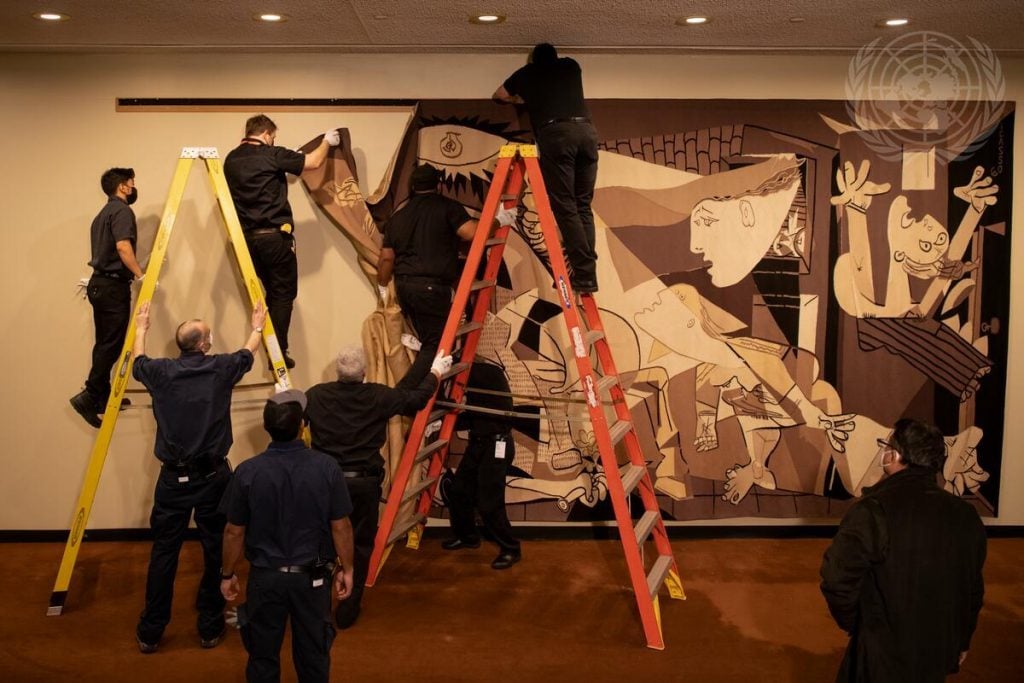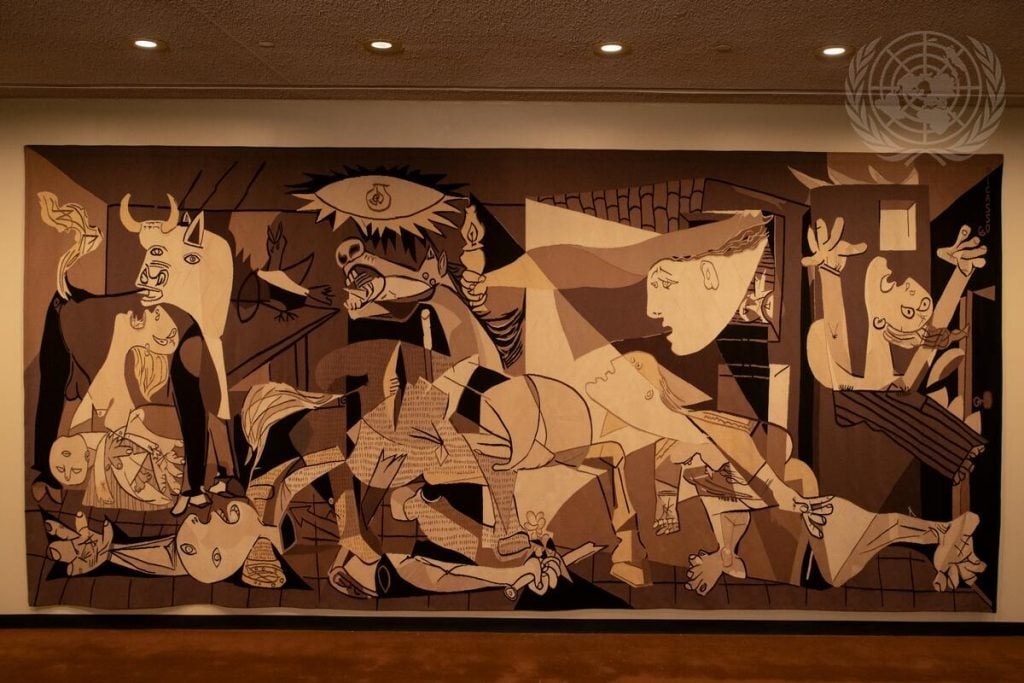Politics
The Abrupt Removal of the U.N.’s 25-Foot Tapestry of Picasso’s ‘Guernica’ Caused an Uproar. Now, the Mystery Has Been Solved
The tapestry was commissioned by Nelson Rockefeller in 1955 and has lived at the UN on loan since 1984.

The tapestry was commissioned by Nelson Rockefeller in 1955 and has lived at the UN on loan since 1984.

Taylor Dafoe

One year ago this month, a 25-foot-long tapestry of Pablo Picasso’s Guernica was unceremoniously removed from the United Nations, where it had lived for the better part of the last 38 years, symbolizing the intergovernmental organization’s anti-war efforts.
The abrupt disappearance of the textile angered and confused many U.N. staffers last year, including secretary-general Antonio Guterres. “It’s horrible, horrible that it is gone,” he told CBS News at the time. “We tried so hard to keep it here, we tried and tried, but we did not succeed.”
But now, the artwork is back—and U.N. employees finally have some clarity about why the piece left in the first place.
Nelson A. Rockefeller, Jr., whose family has long been the textile’s stewards, said today that it was only removed for conservation and cleaning. The object has since been reinstalled outside the chambers of the Security Council, the UN’s 15-member body dedicated to international peace and security.
Rockefeller said that the U.N. will remain the artwork’s permanent home, though he hopes to loan the piece to other institutions as well, in an effort to “reach a broader segment of the world’s population and magnify its ability to touch lives and educate.”
“The Guernica tapestry, with its probing symbolism—its depiction of horrific aspects of human nature—wrestles with the cruelty, darkness, and also a seed of hope within humanity,” Rockefeller said in a statement. “[It] is meant to be experienced and interpreted, with Picasso refusing to share its message when asked.”

The tapestry of Pablo Picasso’s Guernica rehung outside the United Nations Security Council Chamber. Courtesy of the United Nations.
Rockefeller, Jr. told the New York Times today that “there was some miscommunication” last February and that he did not intend to suggest the tapestry would be permanently relocated. “I can certainly understand how the U.N. and the secretary-general had developed a close and strong association with it,” he said.
The canvas tapestry was commissioned by former U.S. vice president and New York governor Nelson Rockefeller in 1955, along with 15 other works based on Picasso paintings. Each was woven at the atelier of French artist Jacqueline de la Baume Dürrbach with Picasso’s permission.
The Guernica piece was loaned to the U.N. in 1984, while the others were transferred to National Trust for Historic Preservation and are currently displayed at Kykuit, the historic home of the Rockefeller family in Mount Pleasant, New York. Rockefeller said in today’s announcement that he plans to donate the family’s last tapestry to the National Trust in the future.
Picasso’s landmark 1937 painting—upon which the U.N. tapestry was based—was inspired by the calamitous bombing of the Basque town Guernica during the Spanish Civil War. Today it is widely seen as one of the most significant anti-war artworks ever created.
“This is most welcome news as we end a difficult year of global hardship and strife,” said Guterres of the textile’s return to the U.N. this month. “The Guernica tapestry speaks to the world about the urgent need to advance international peace and security. We are honored to serve as careful stewards of this one-of-a-kind iconic work–as we draw inspiration from its message.”